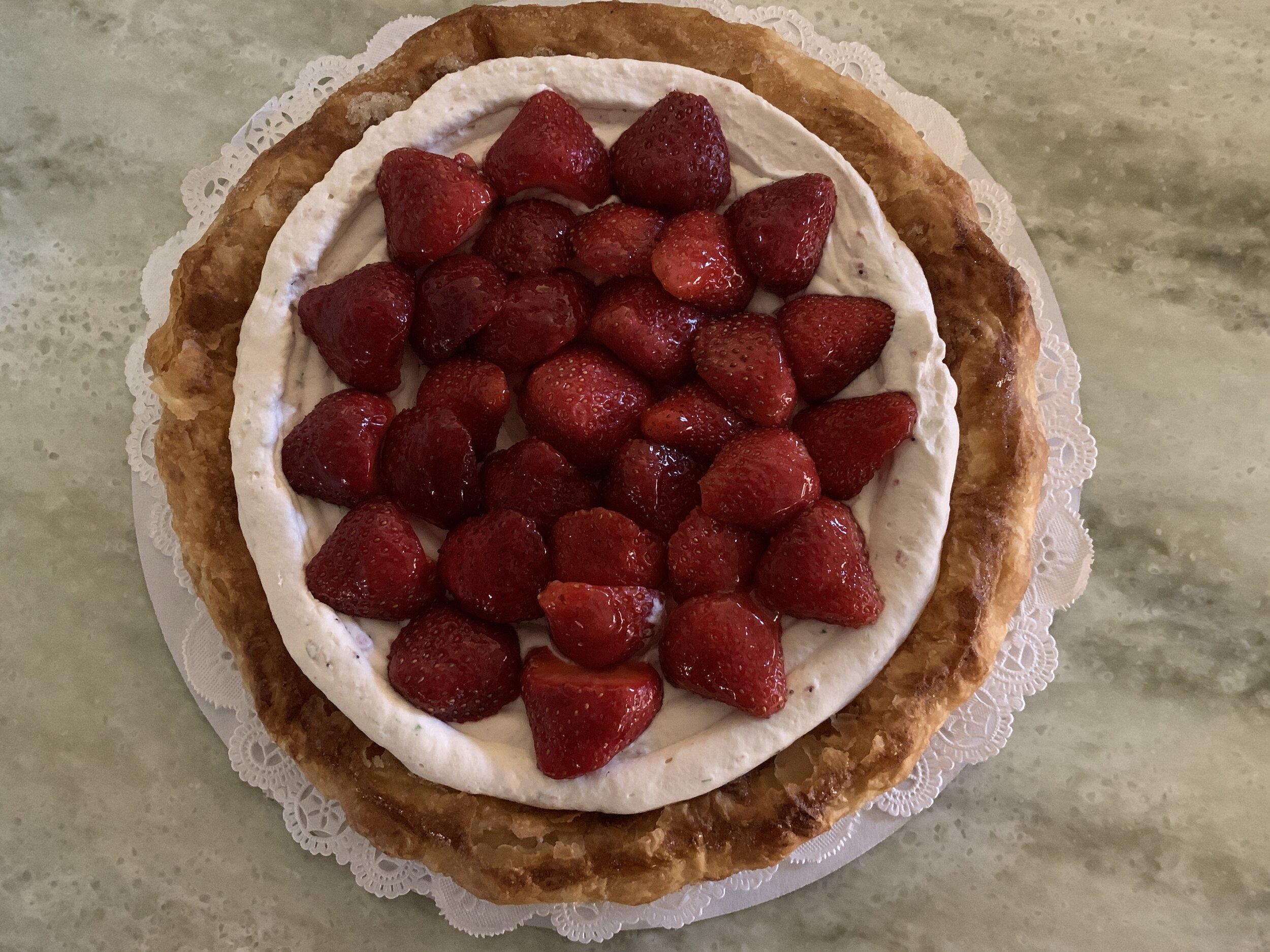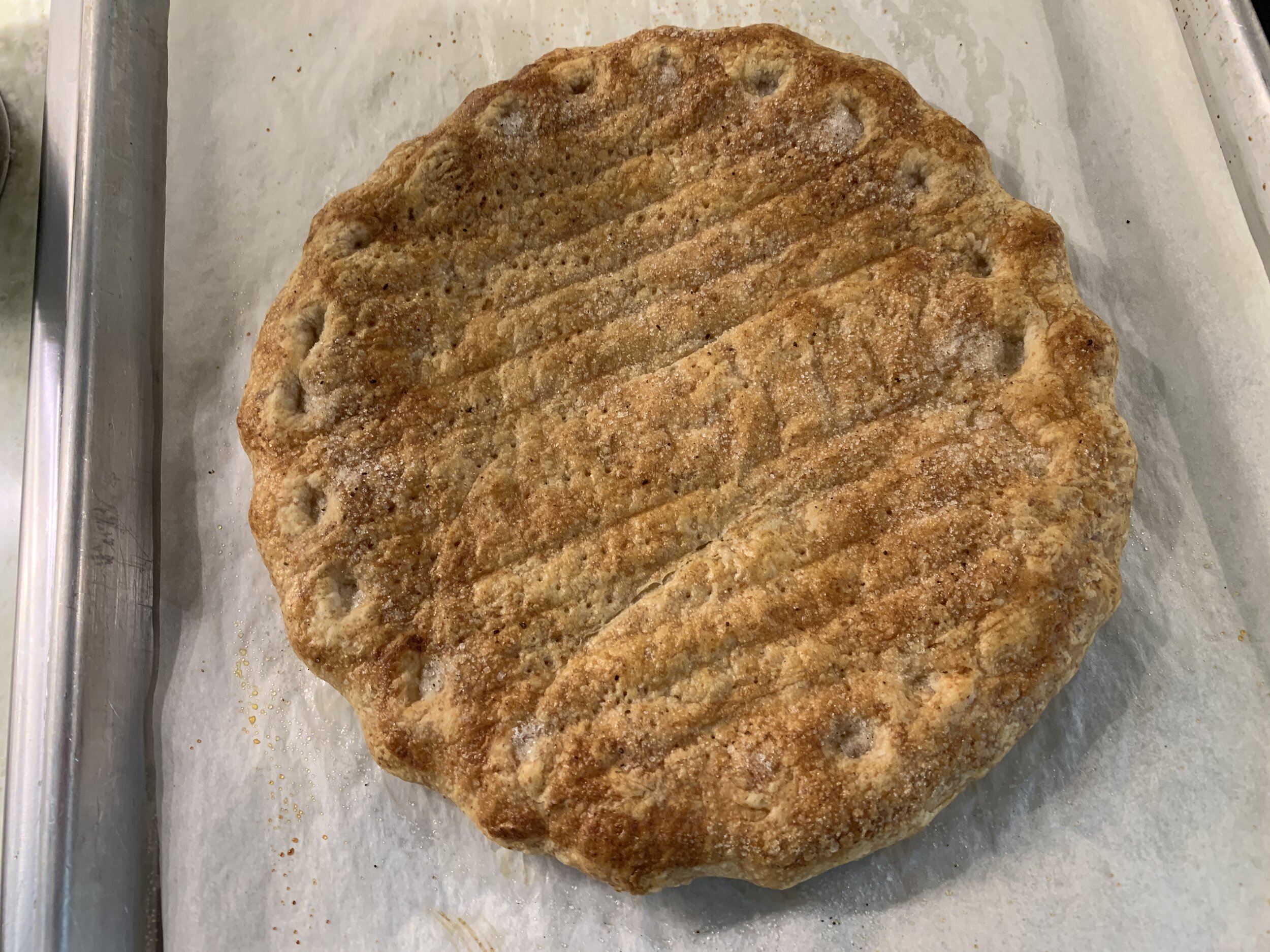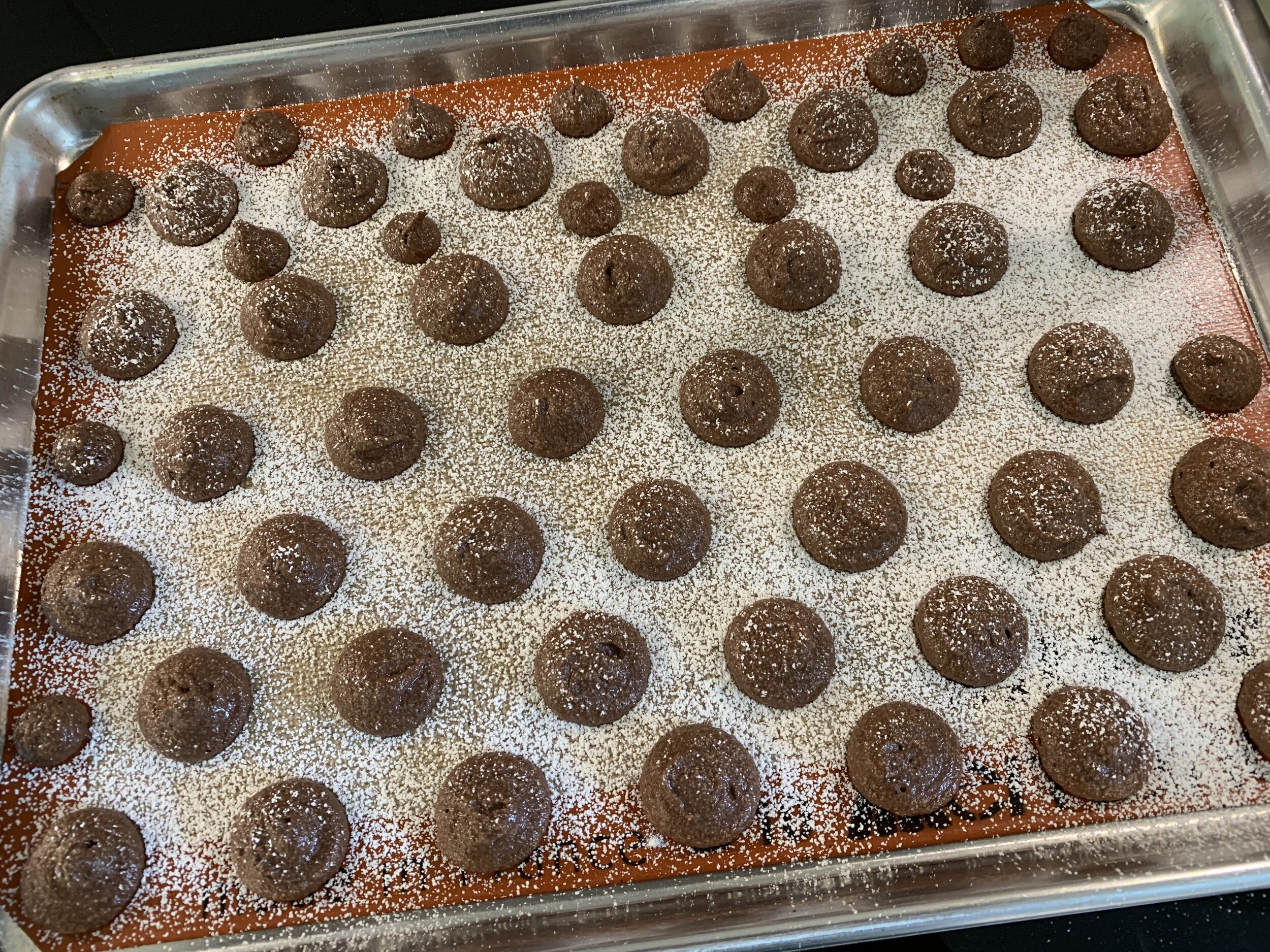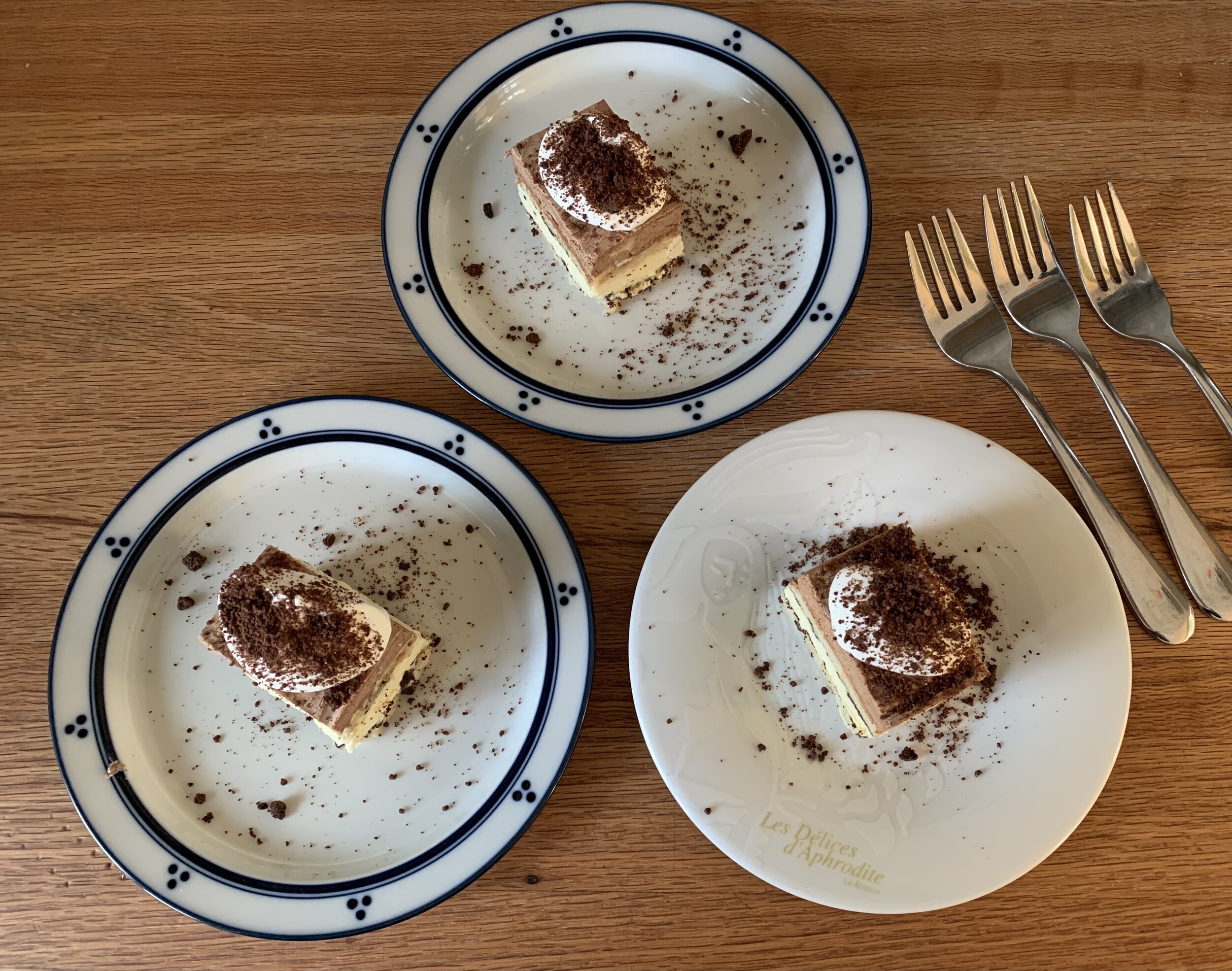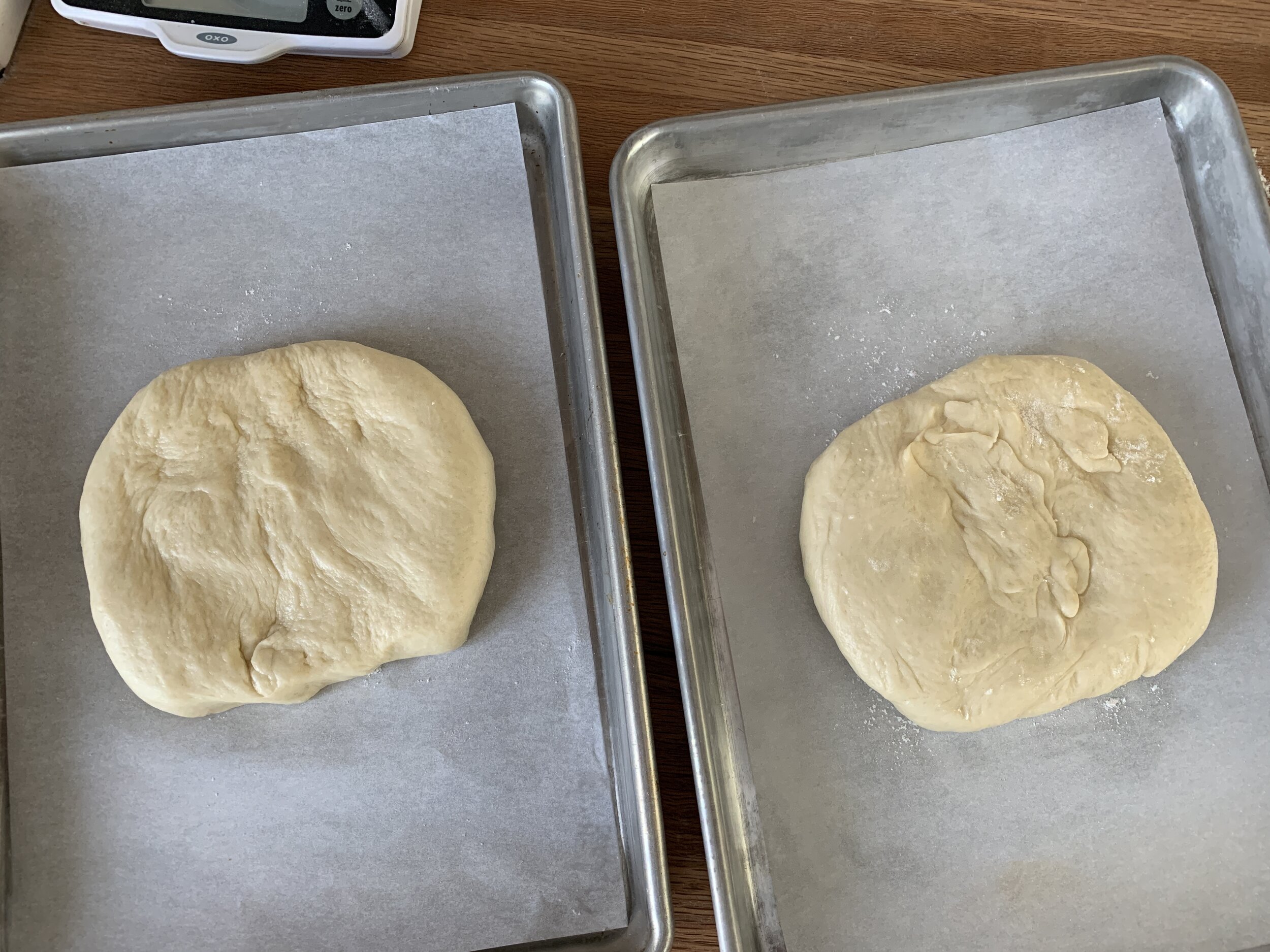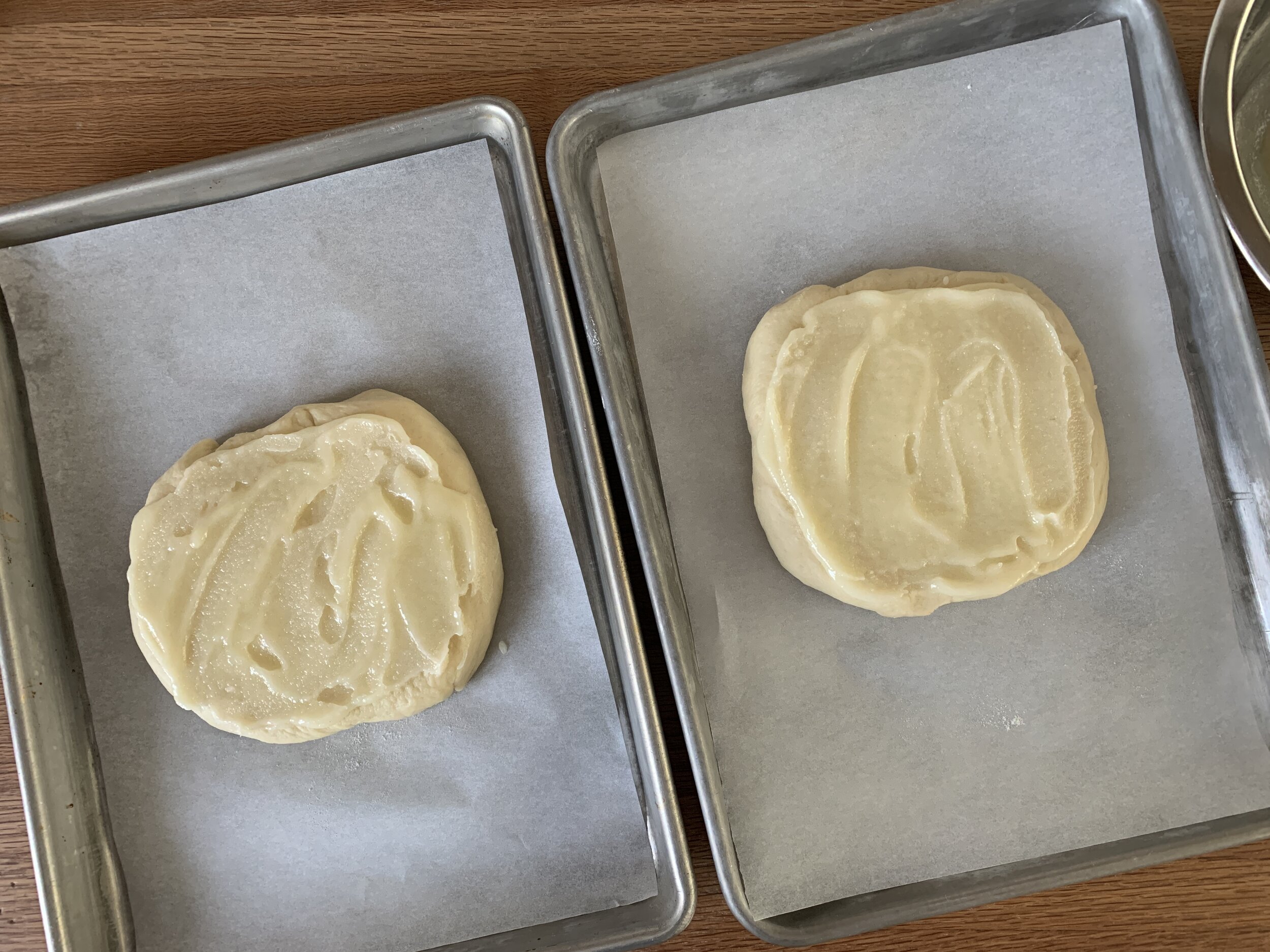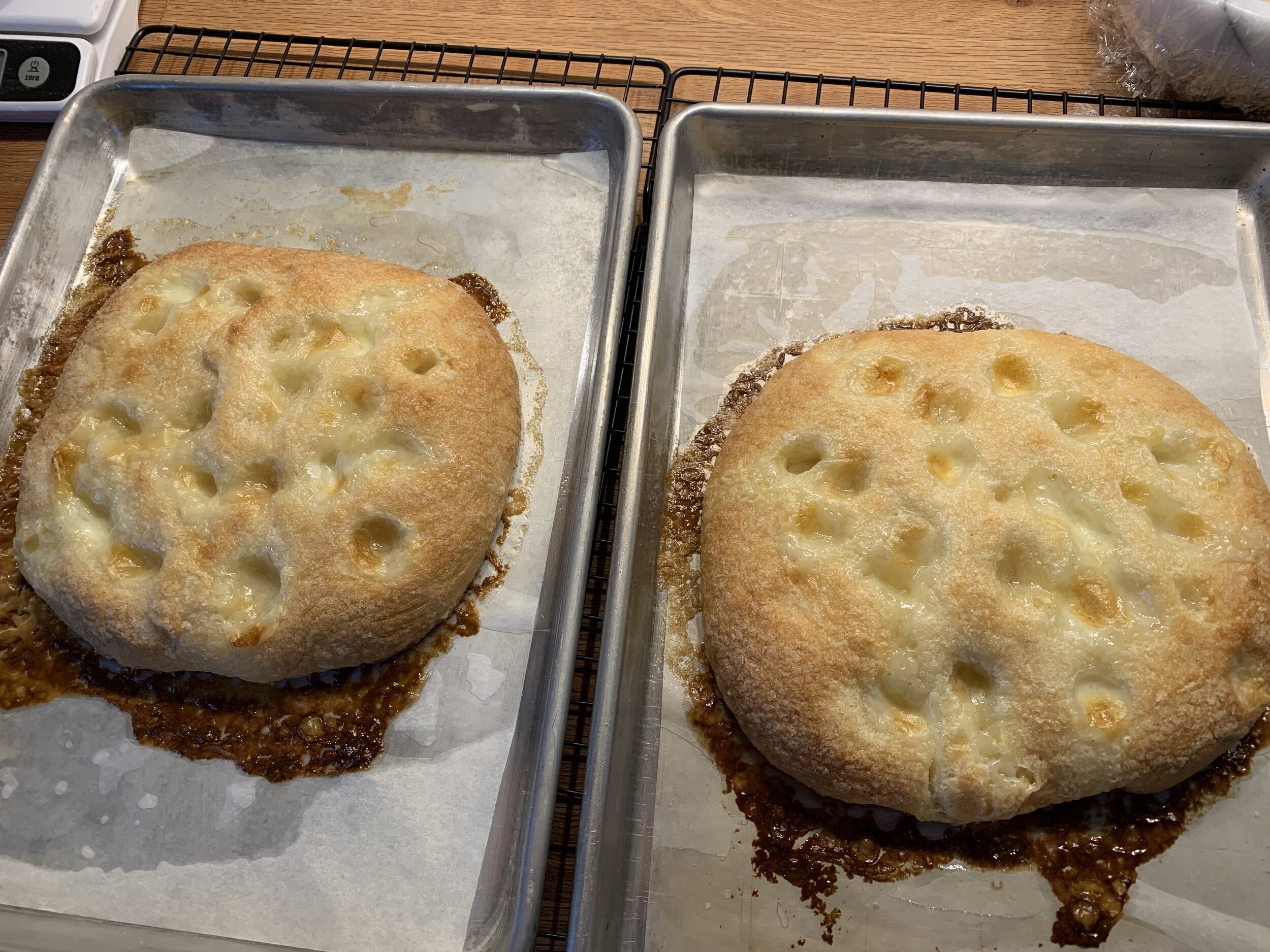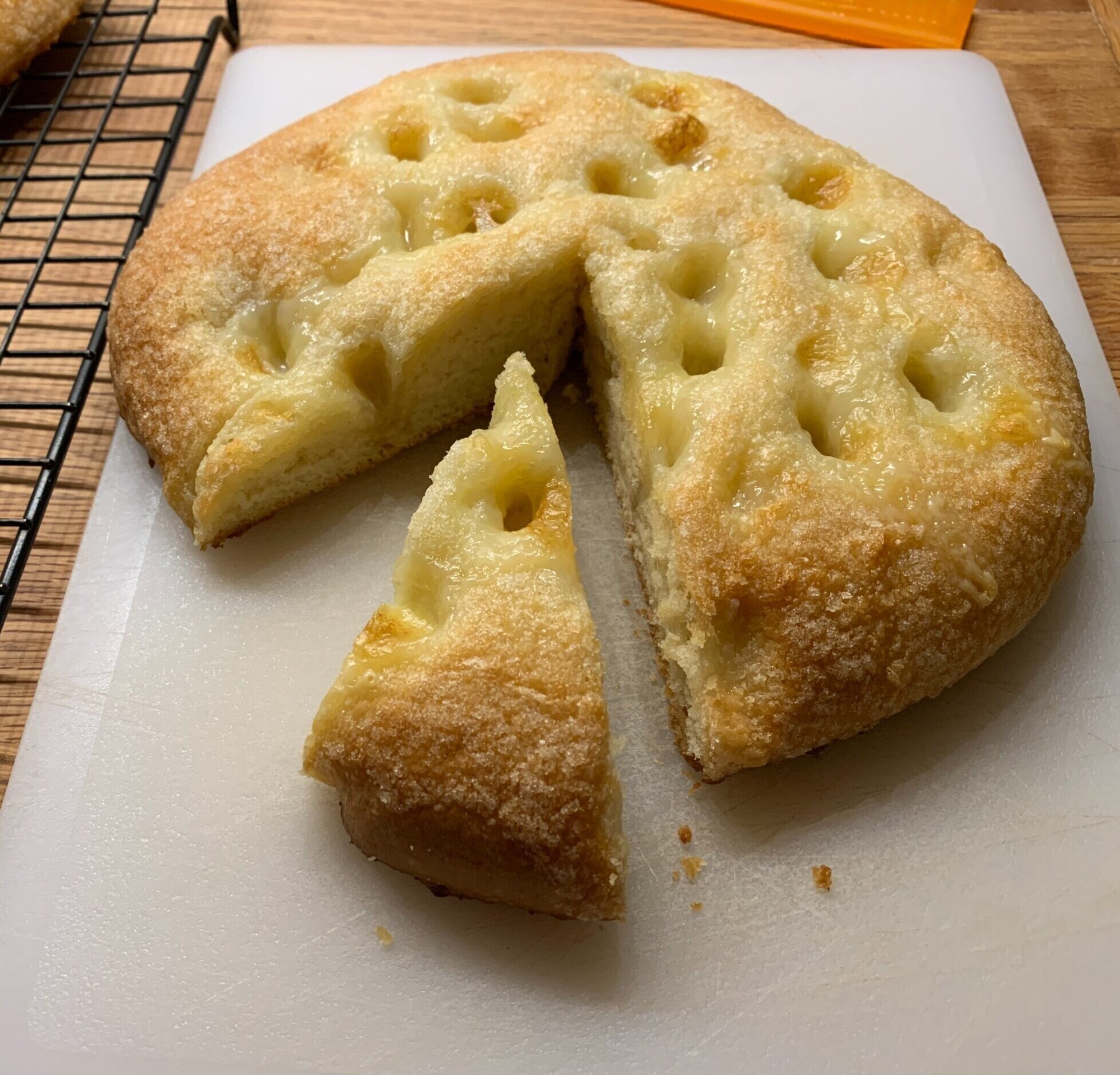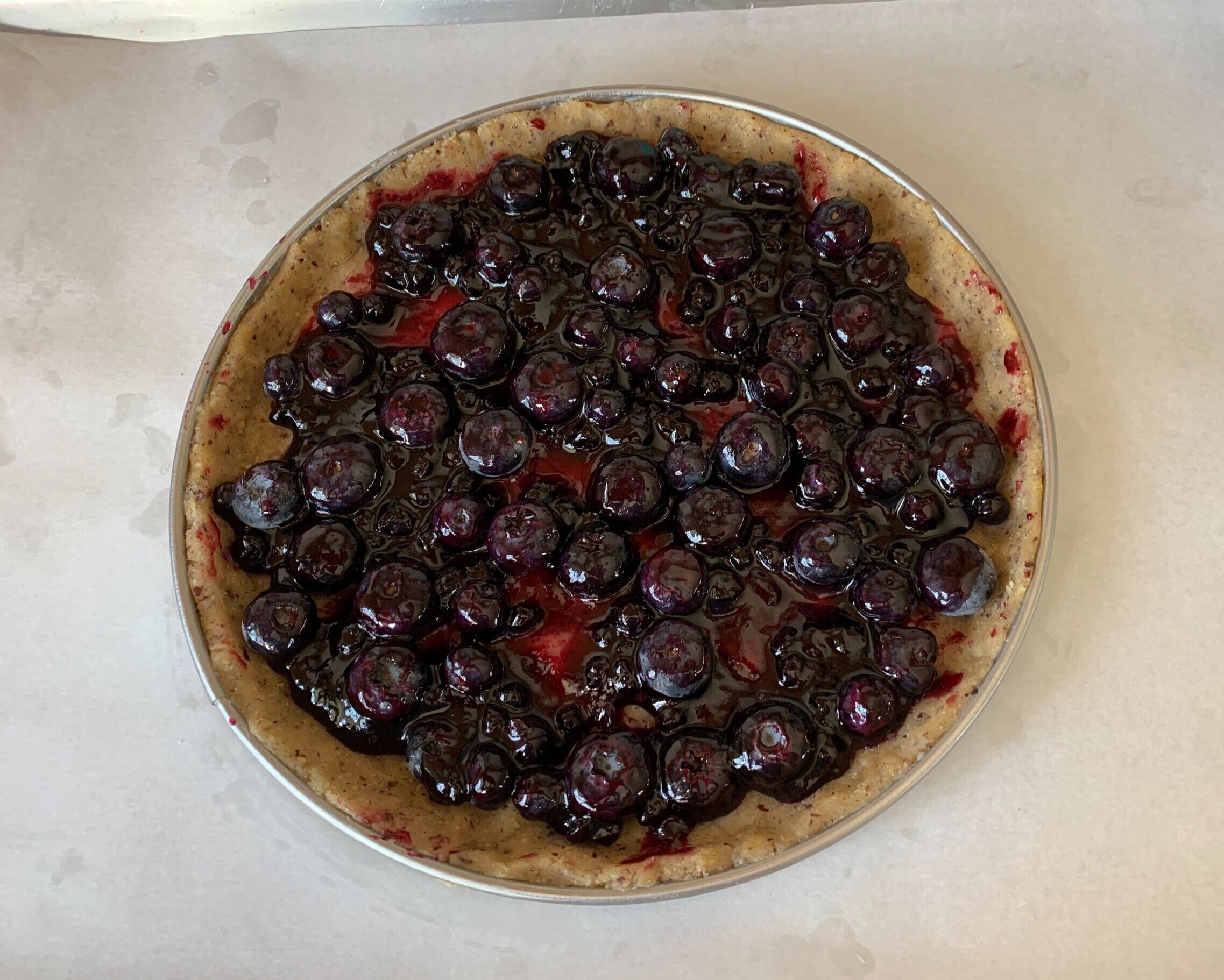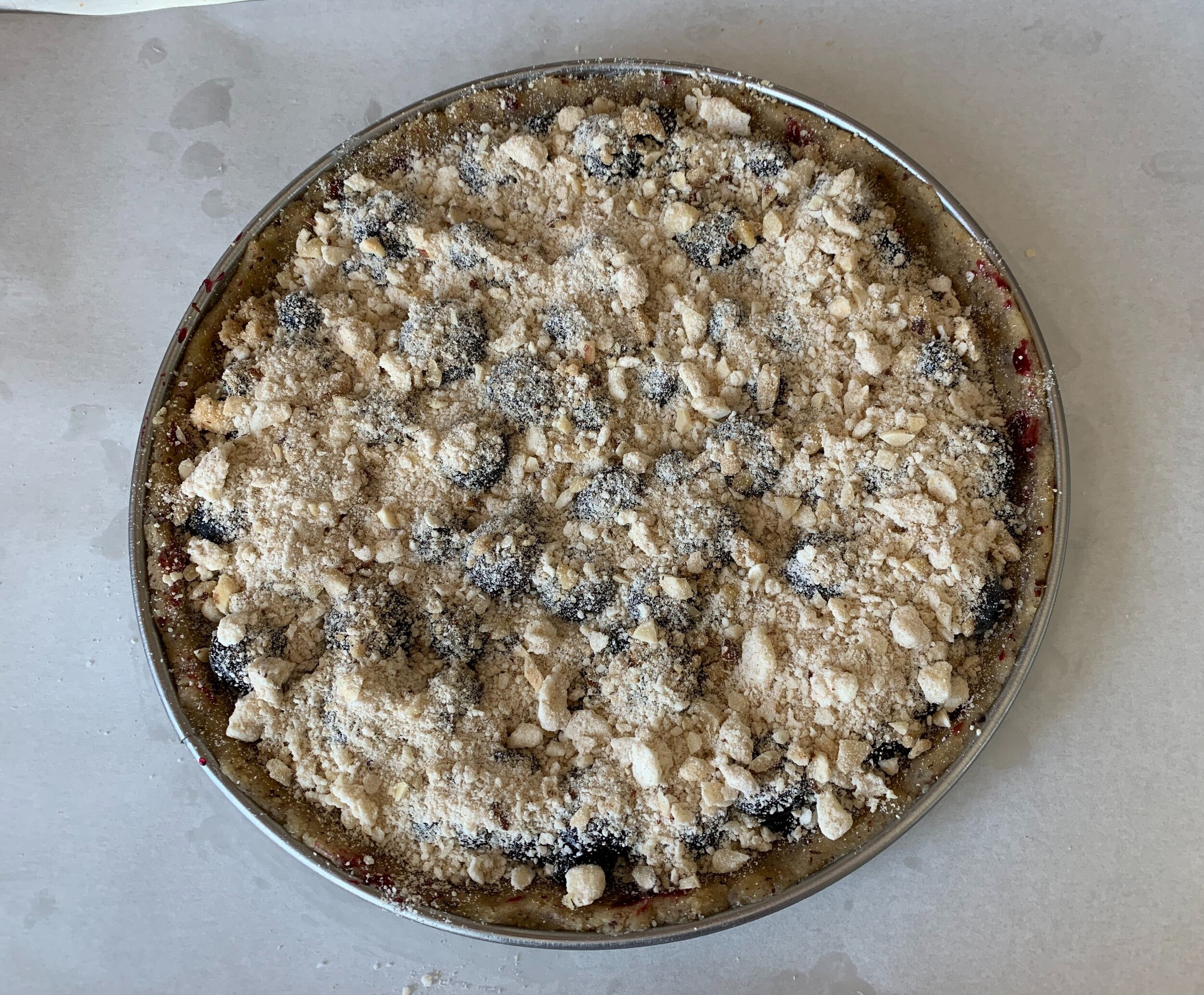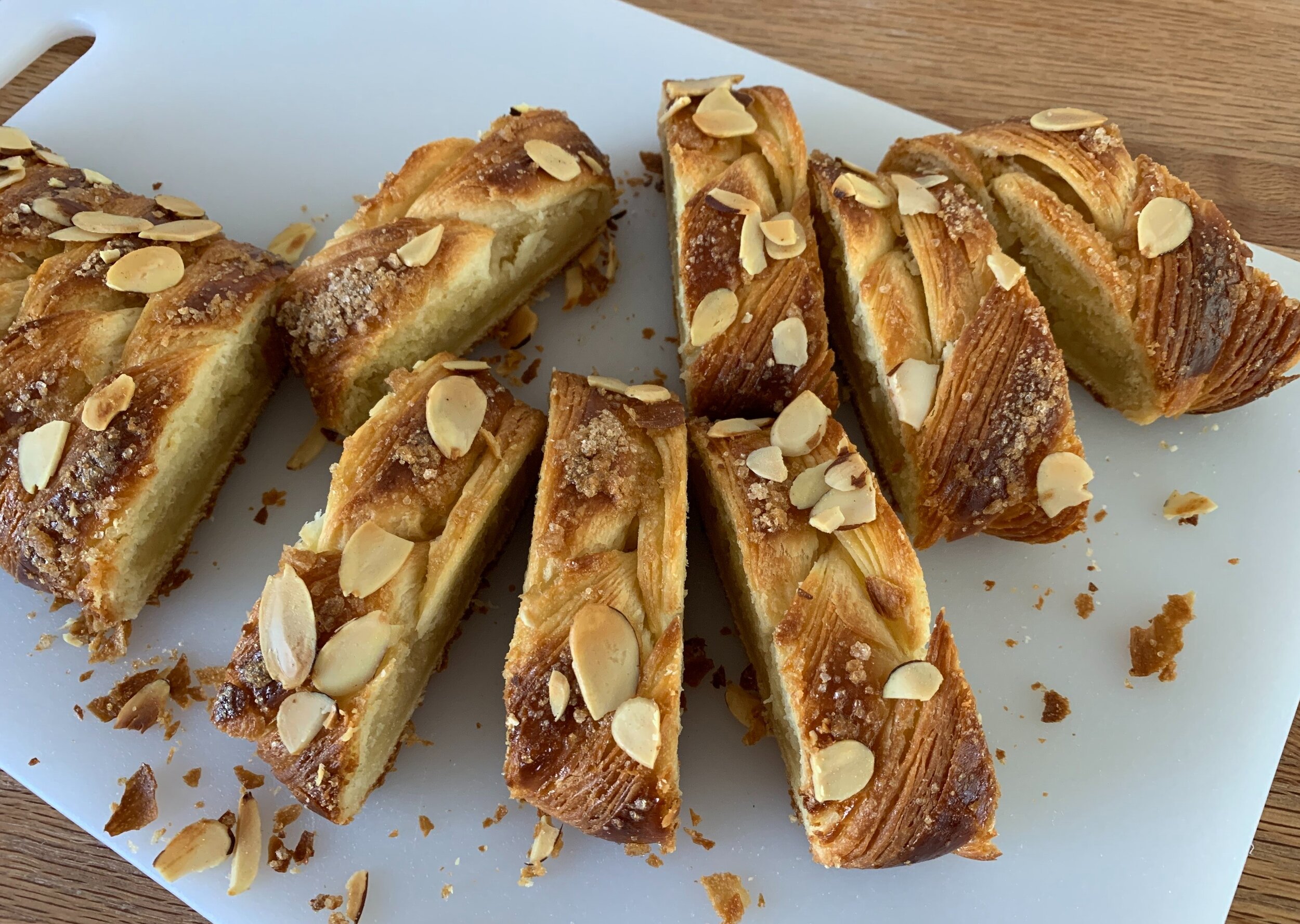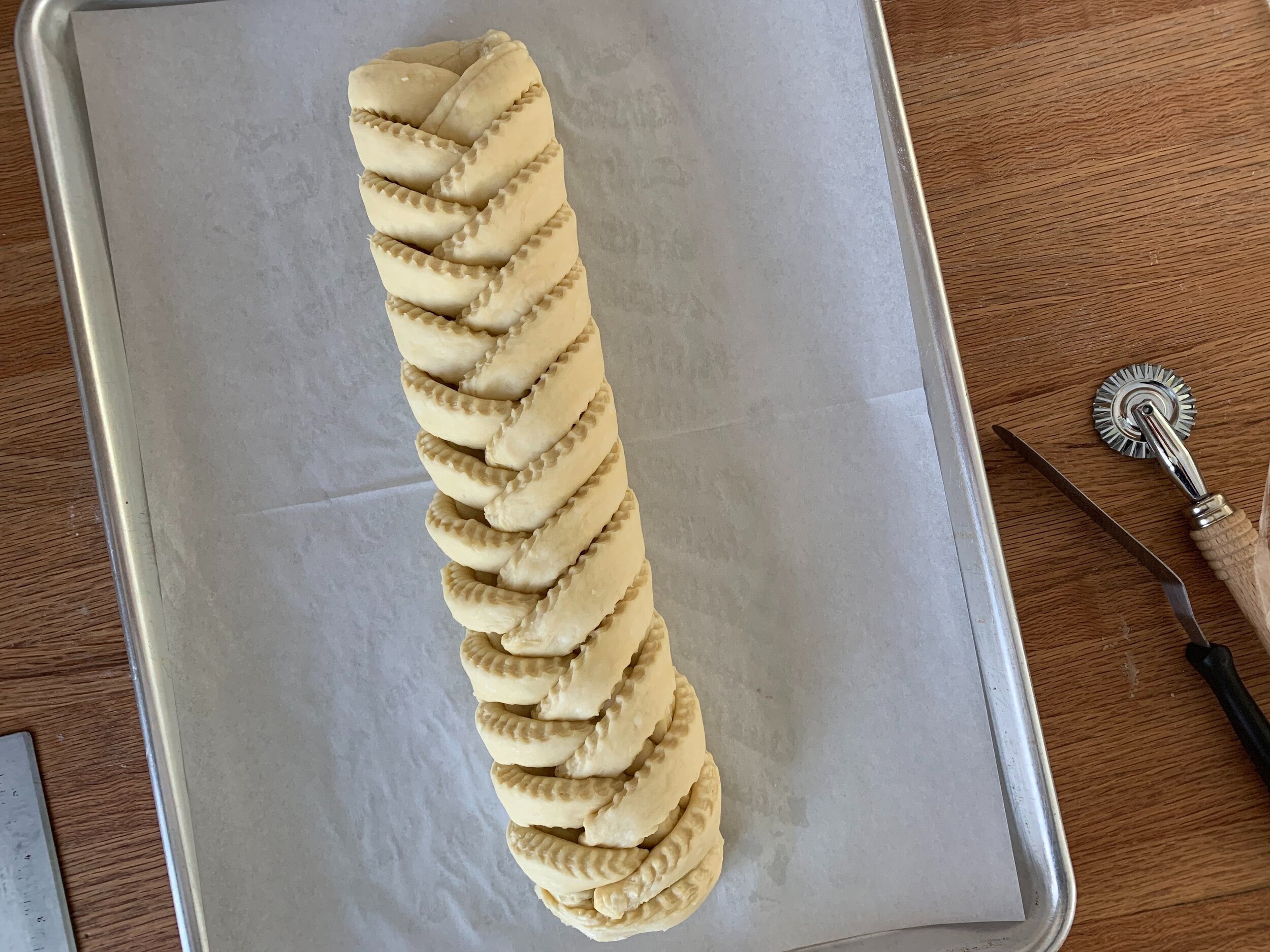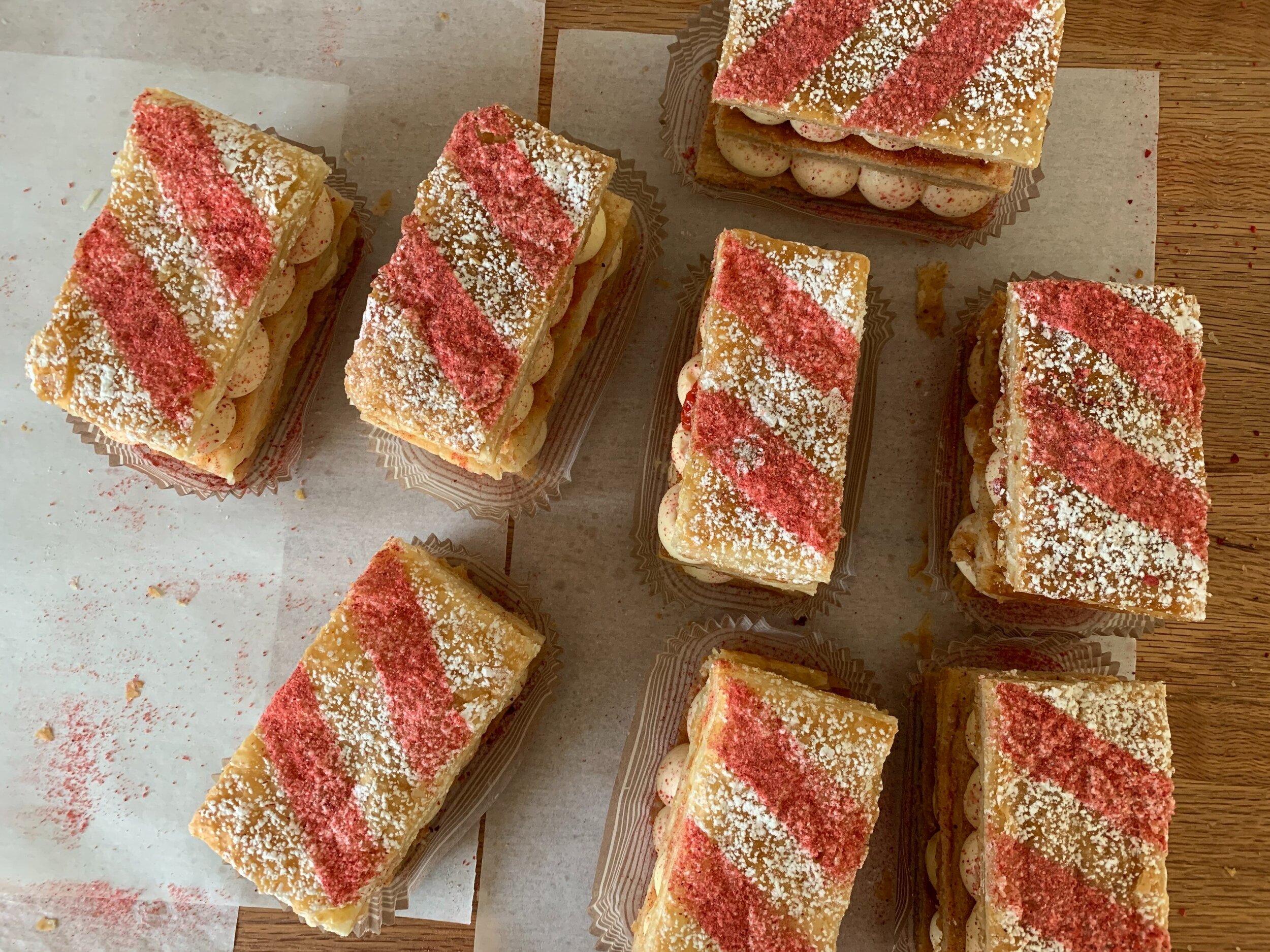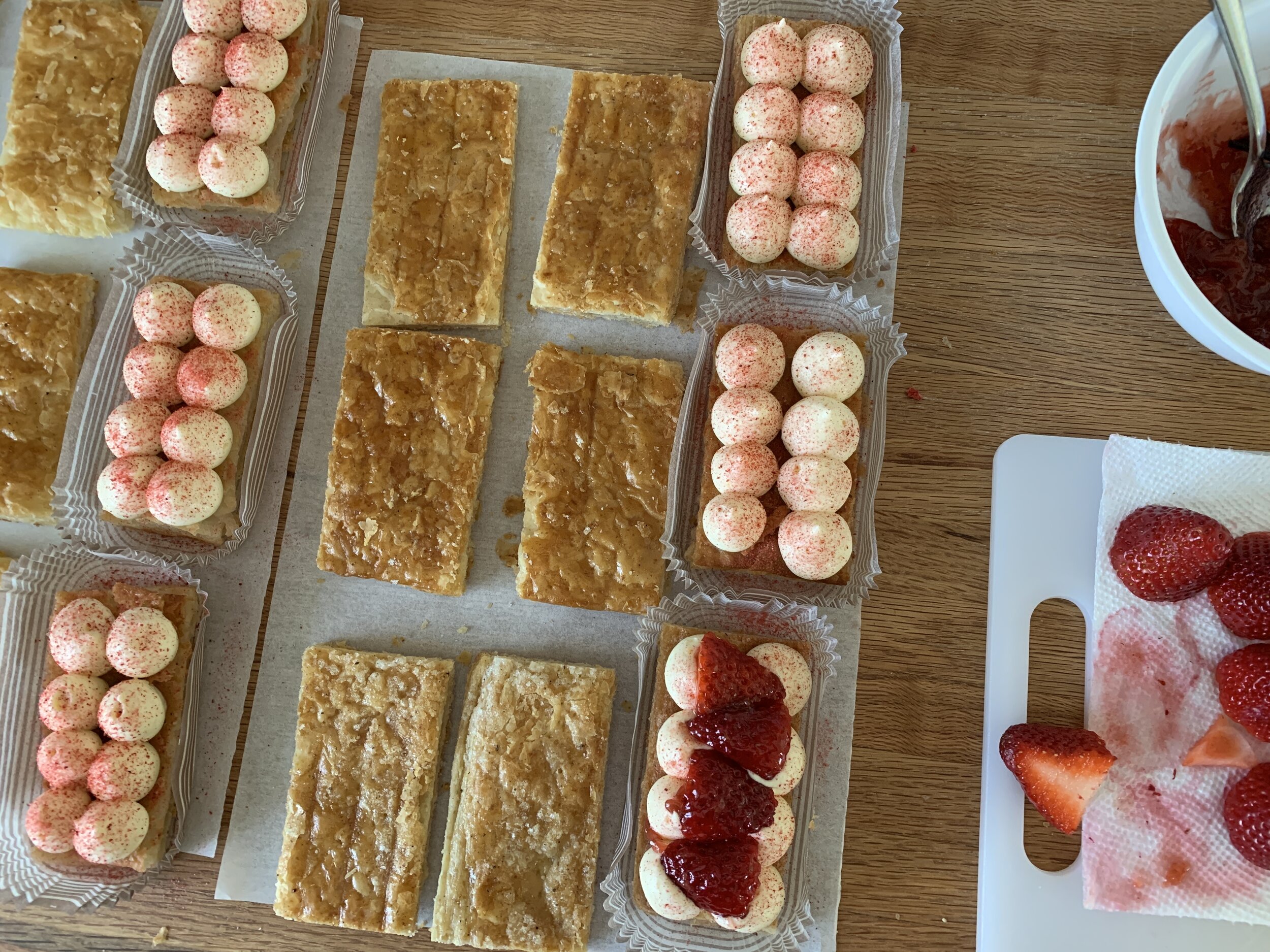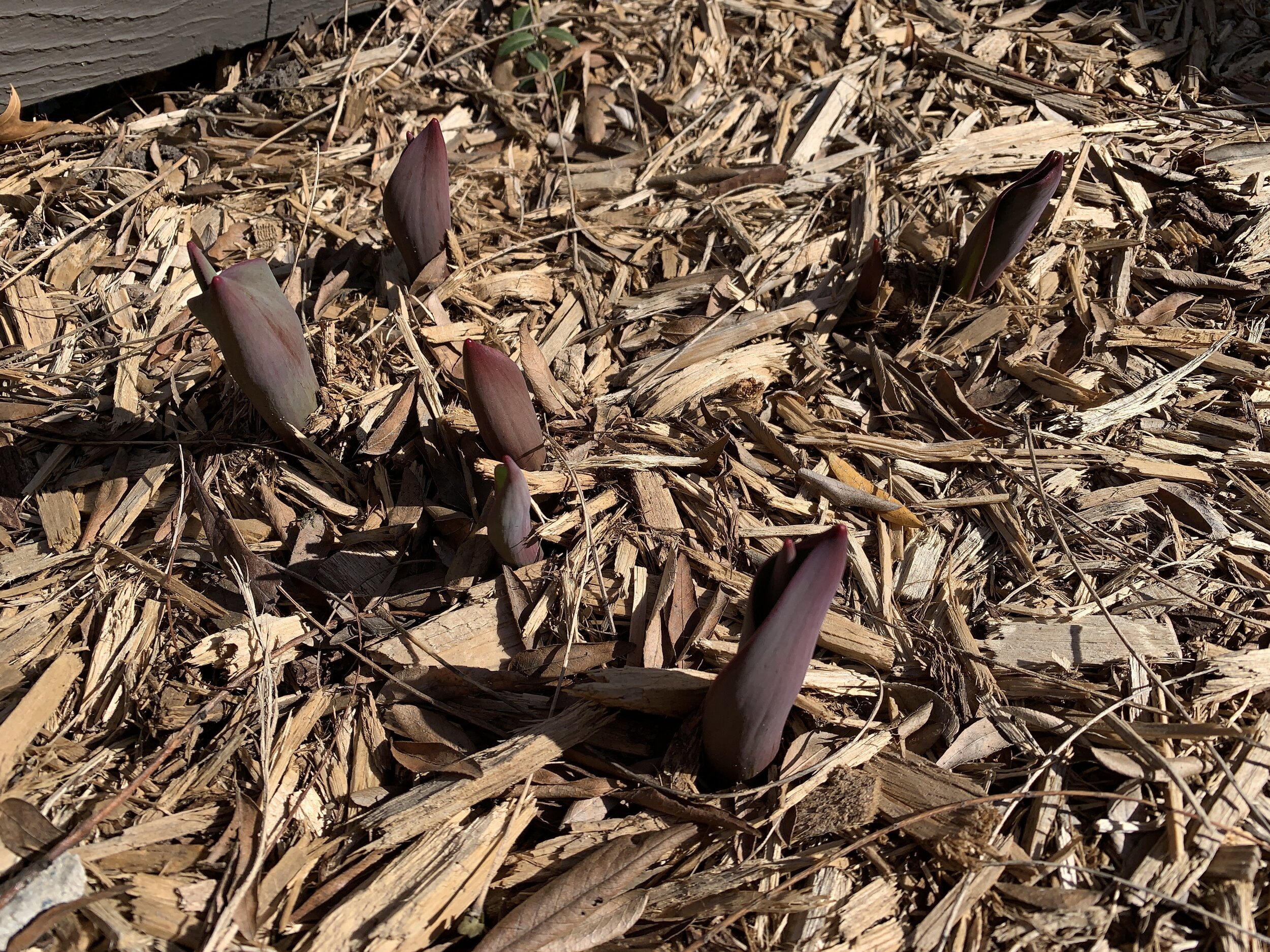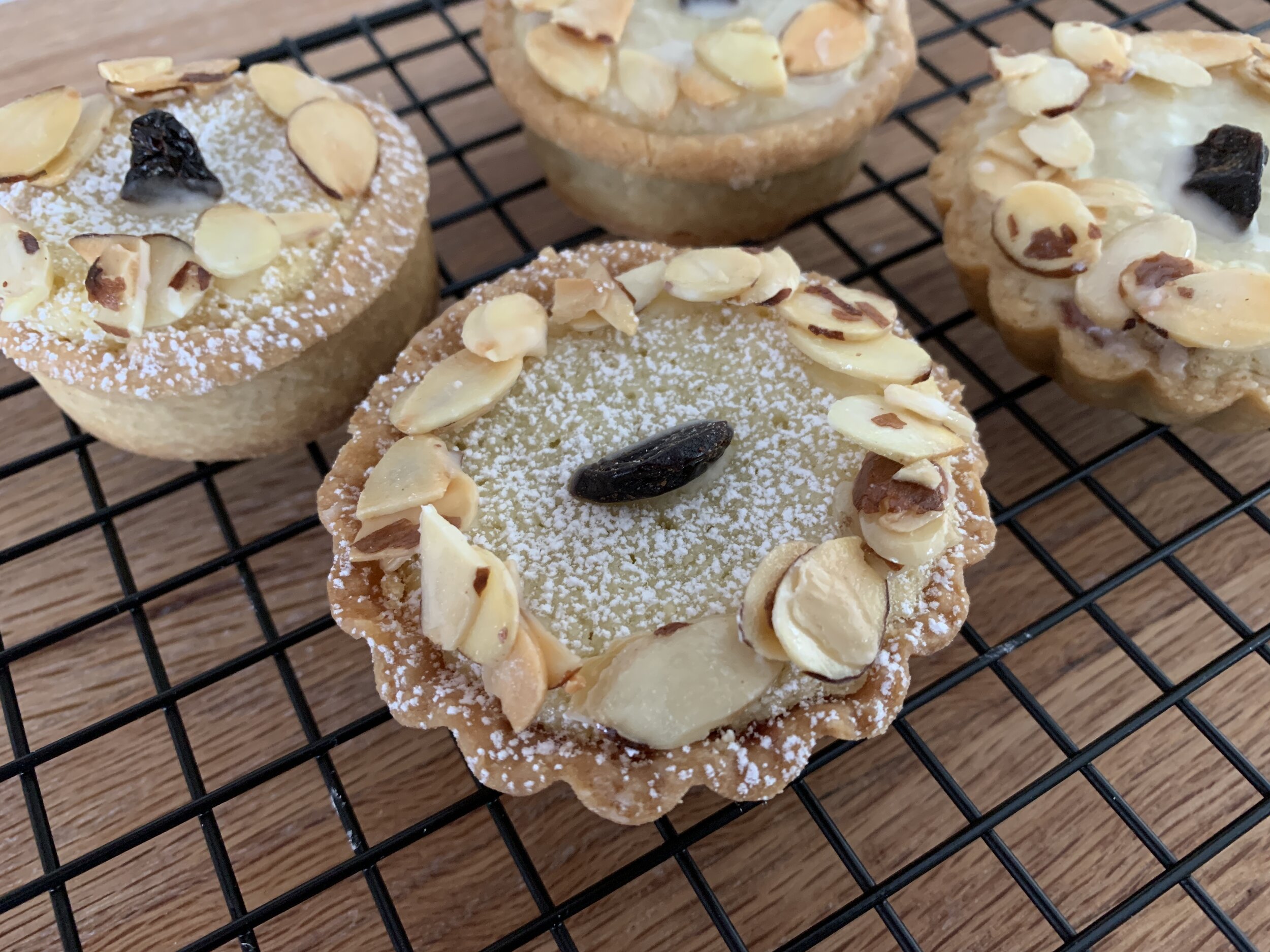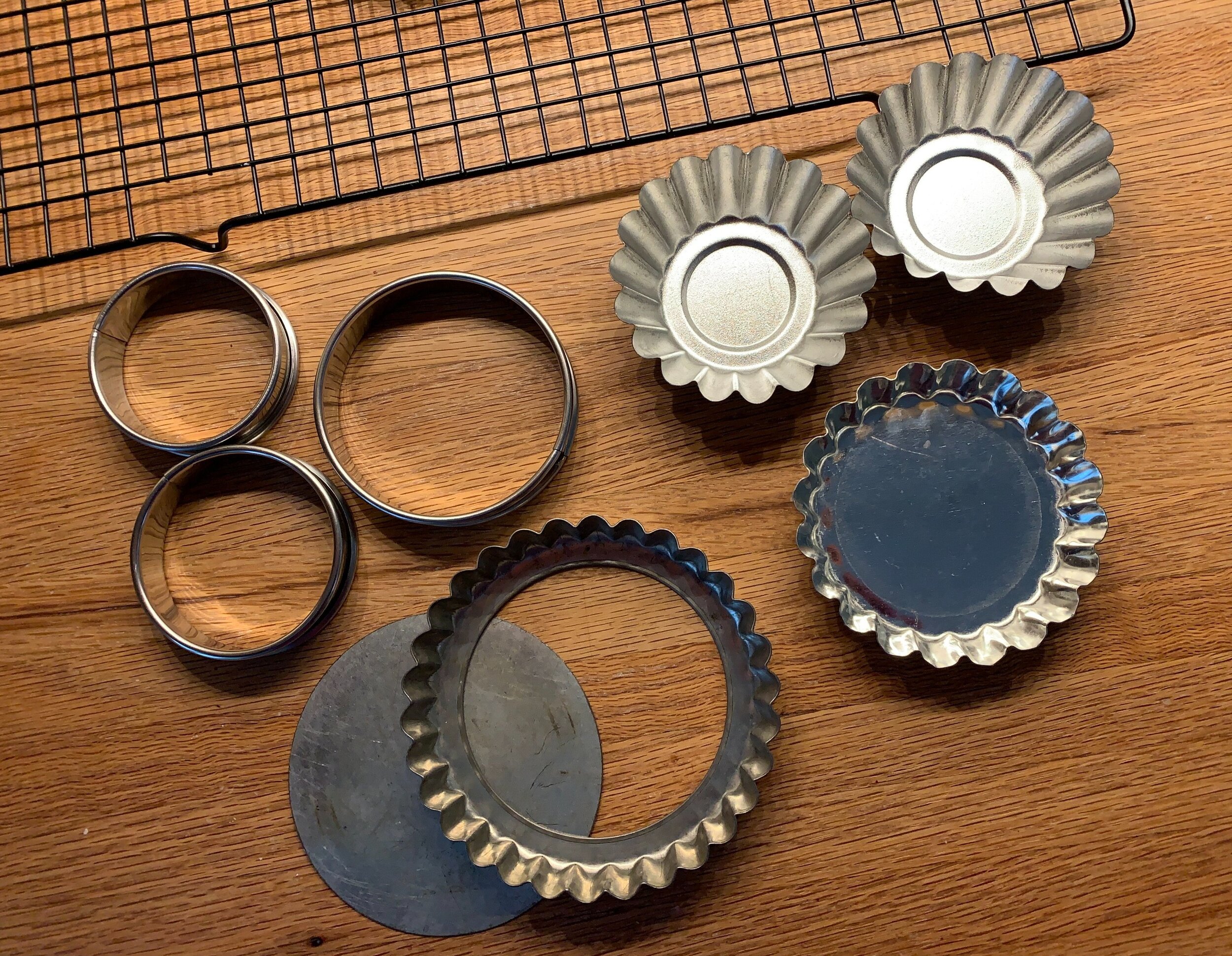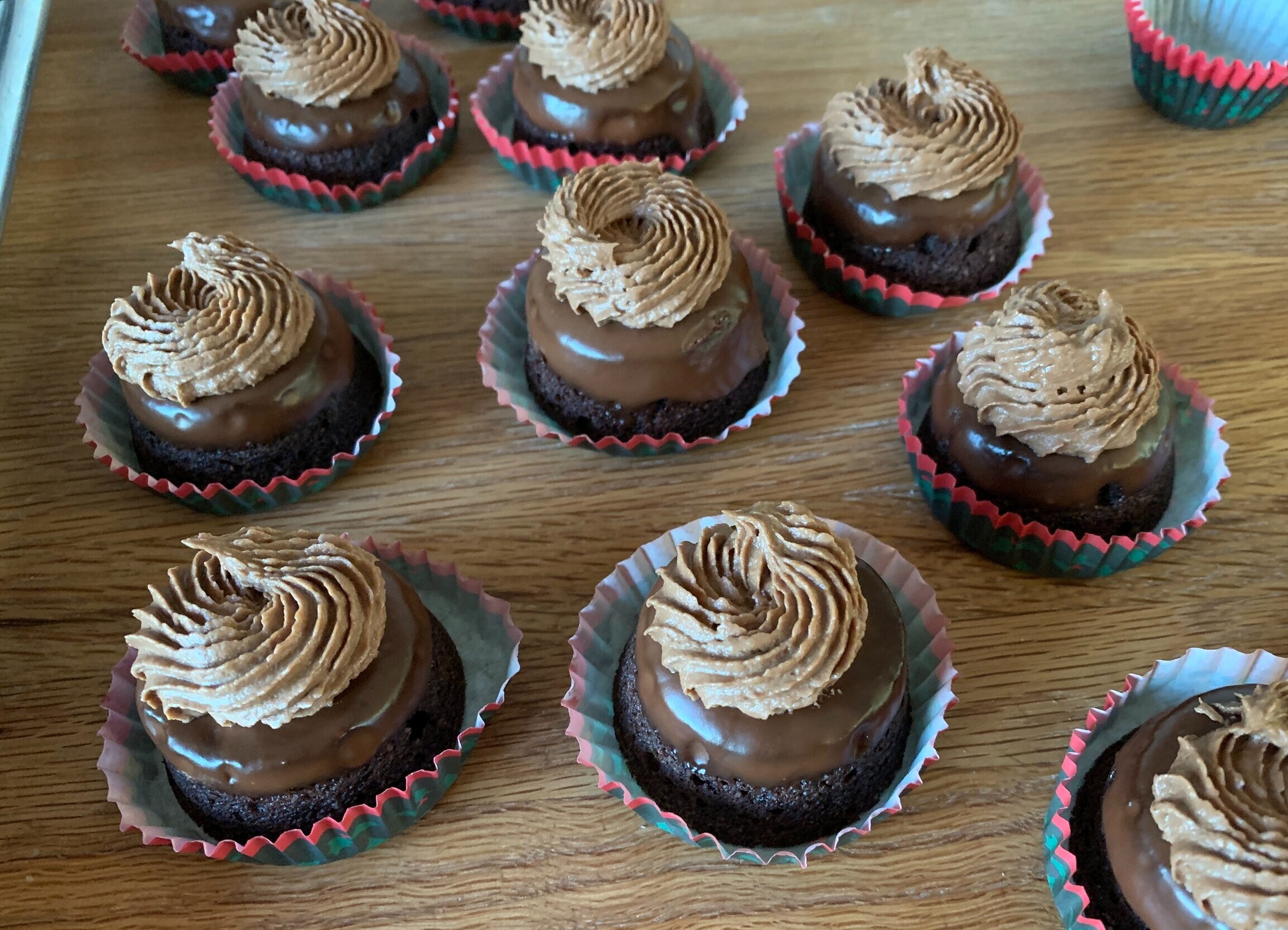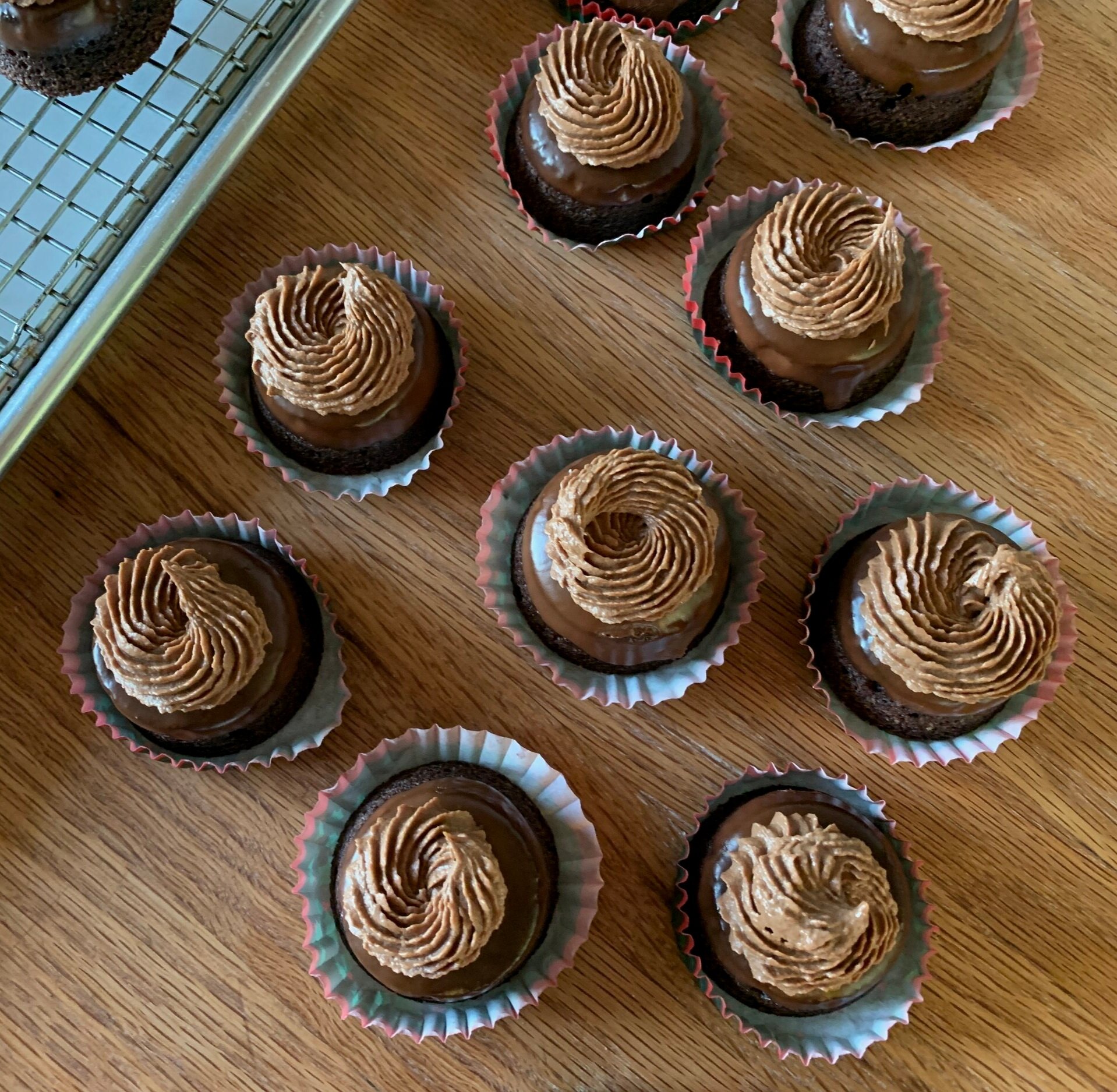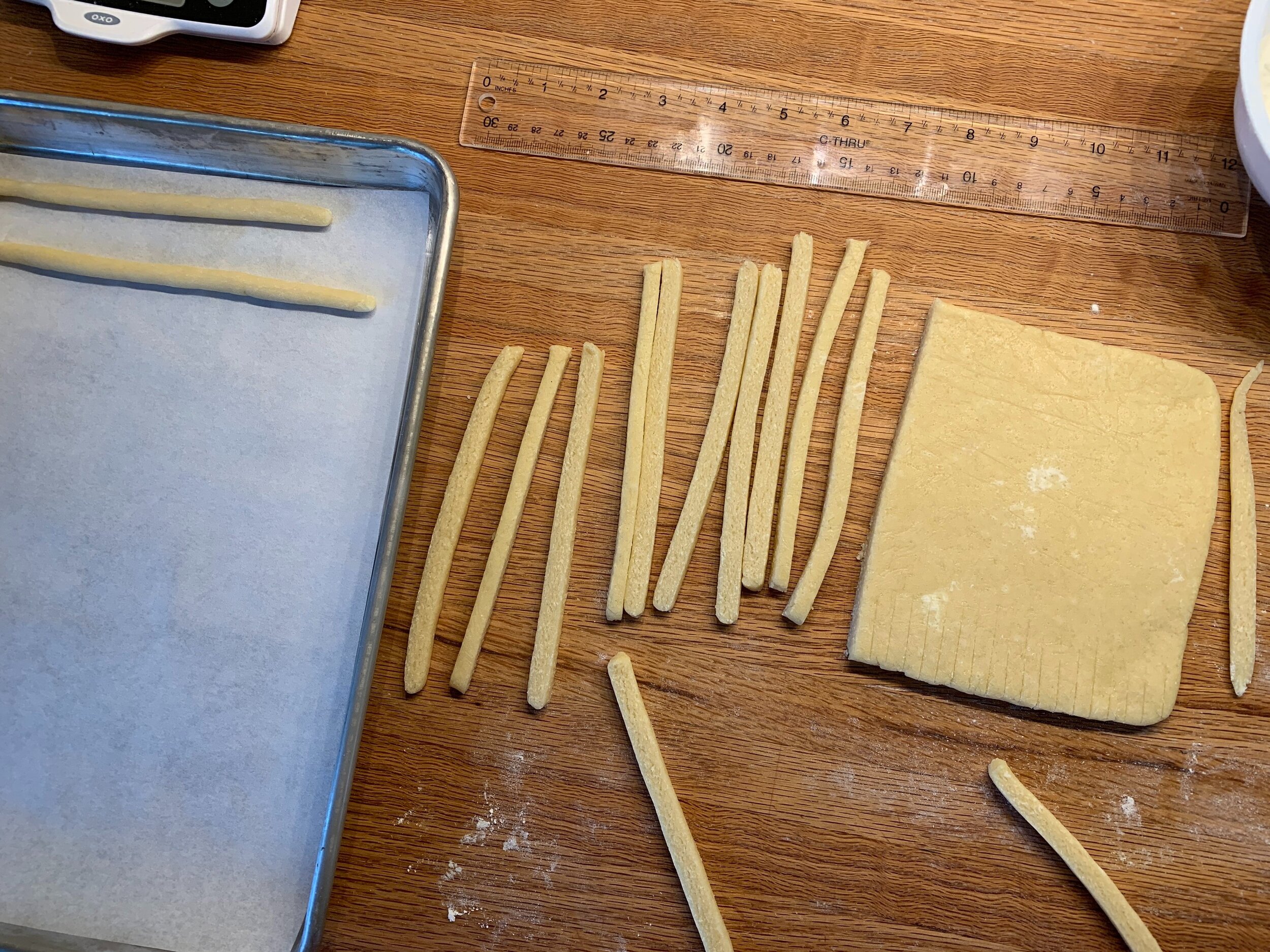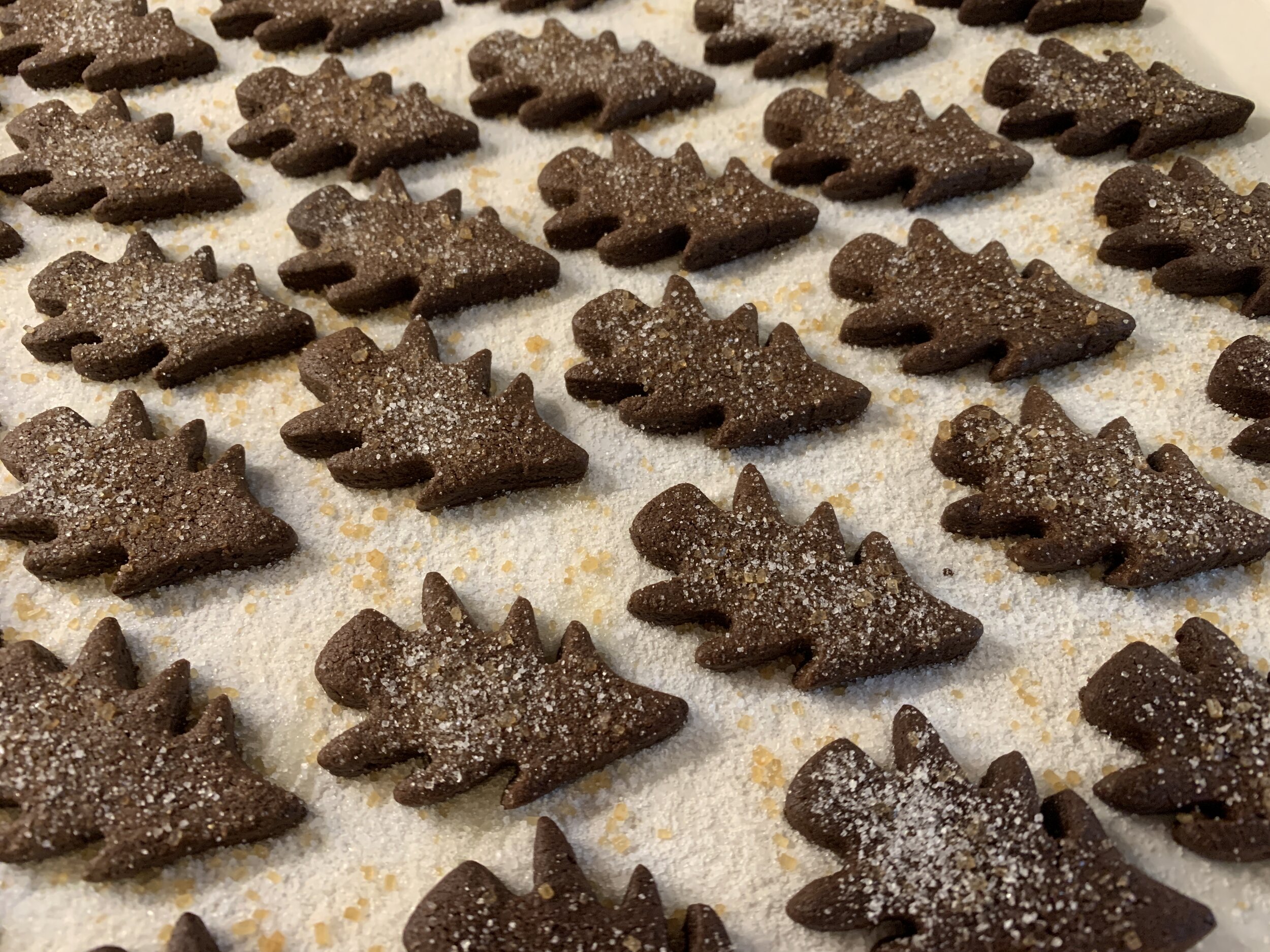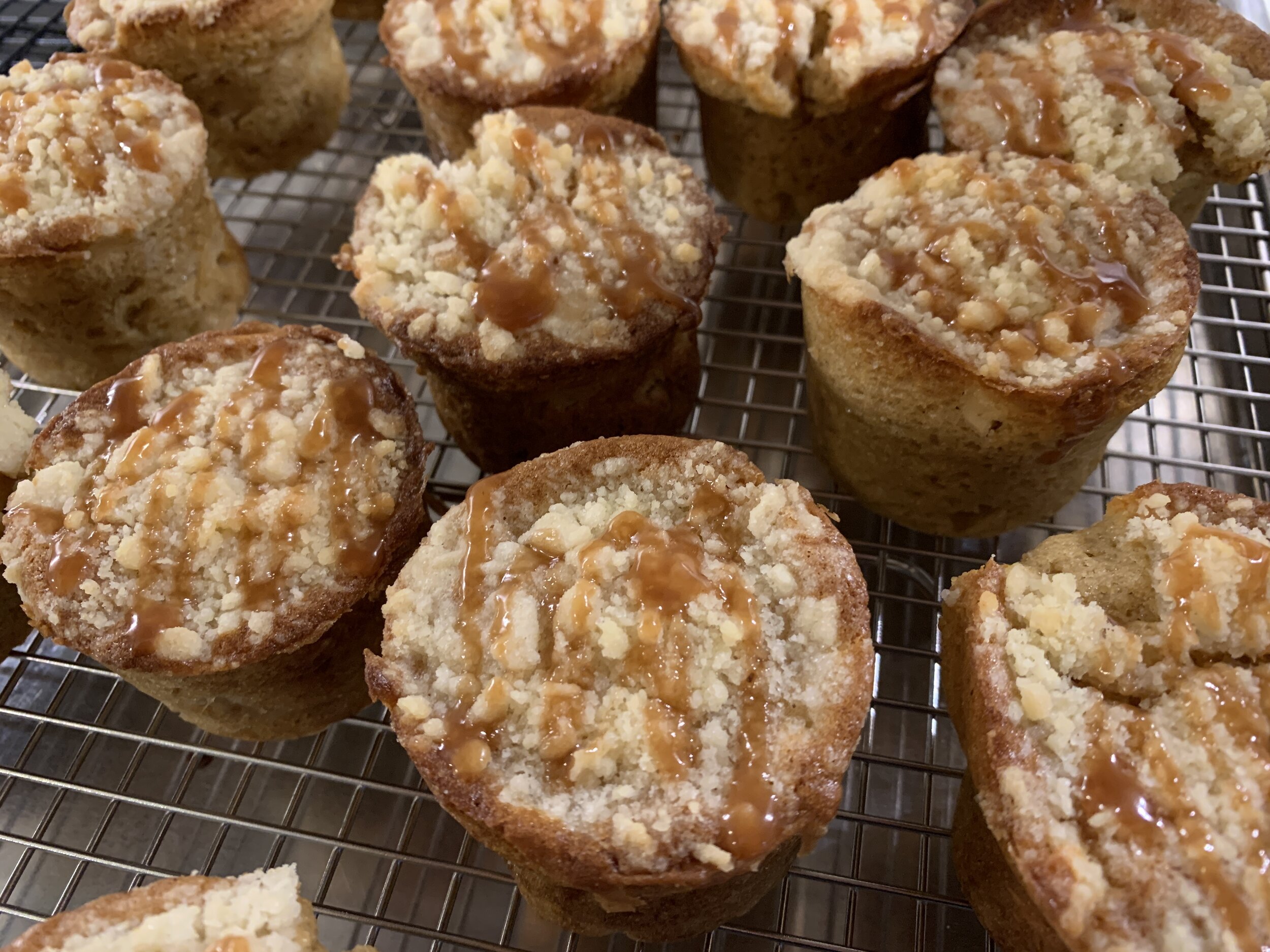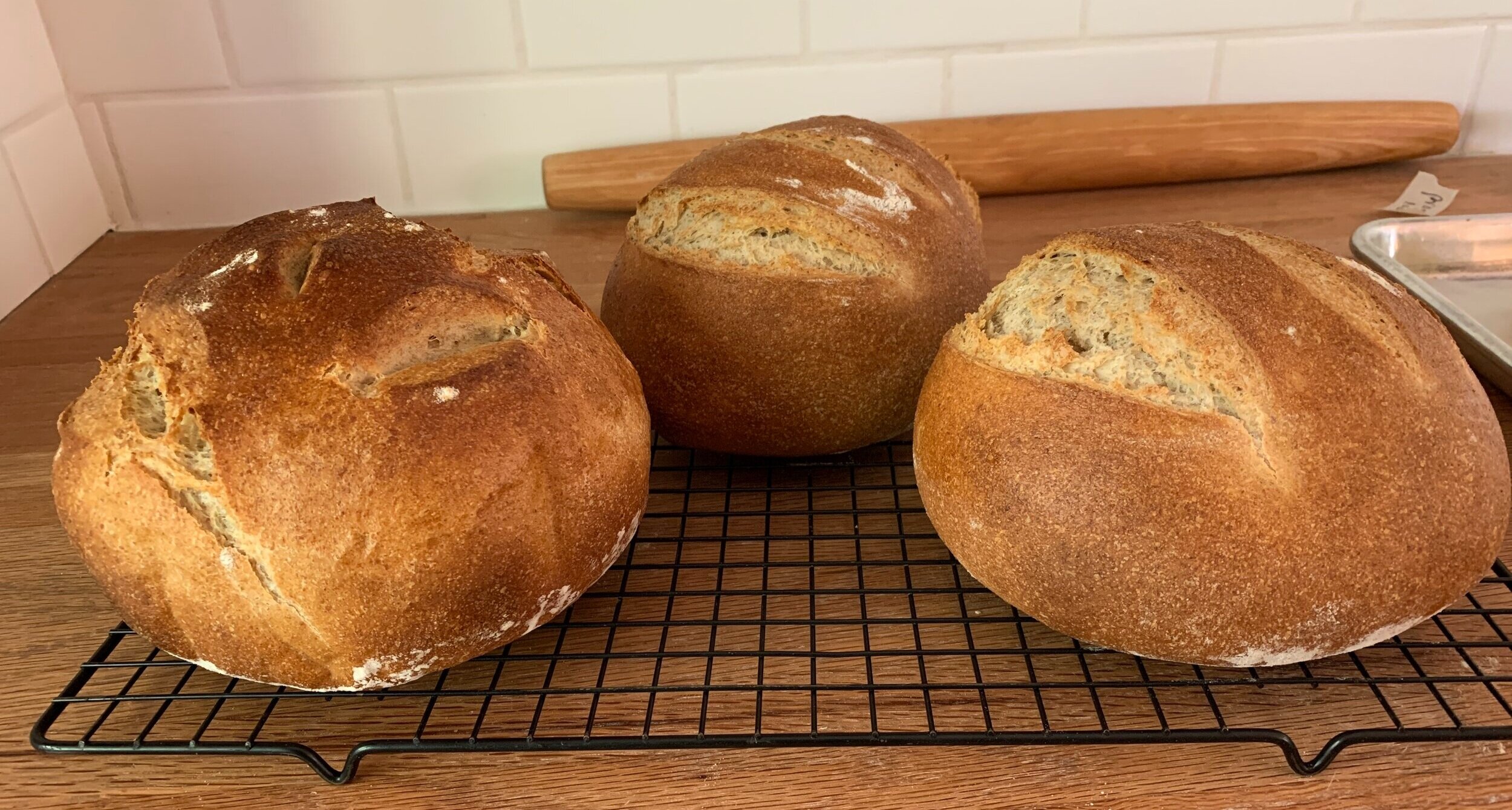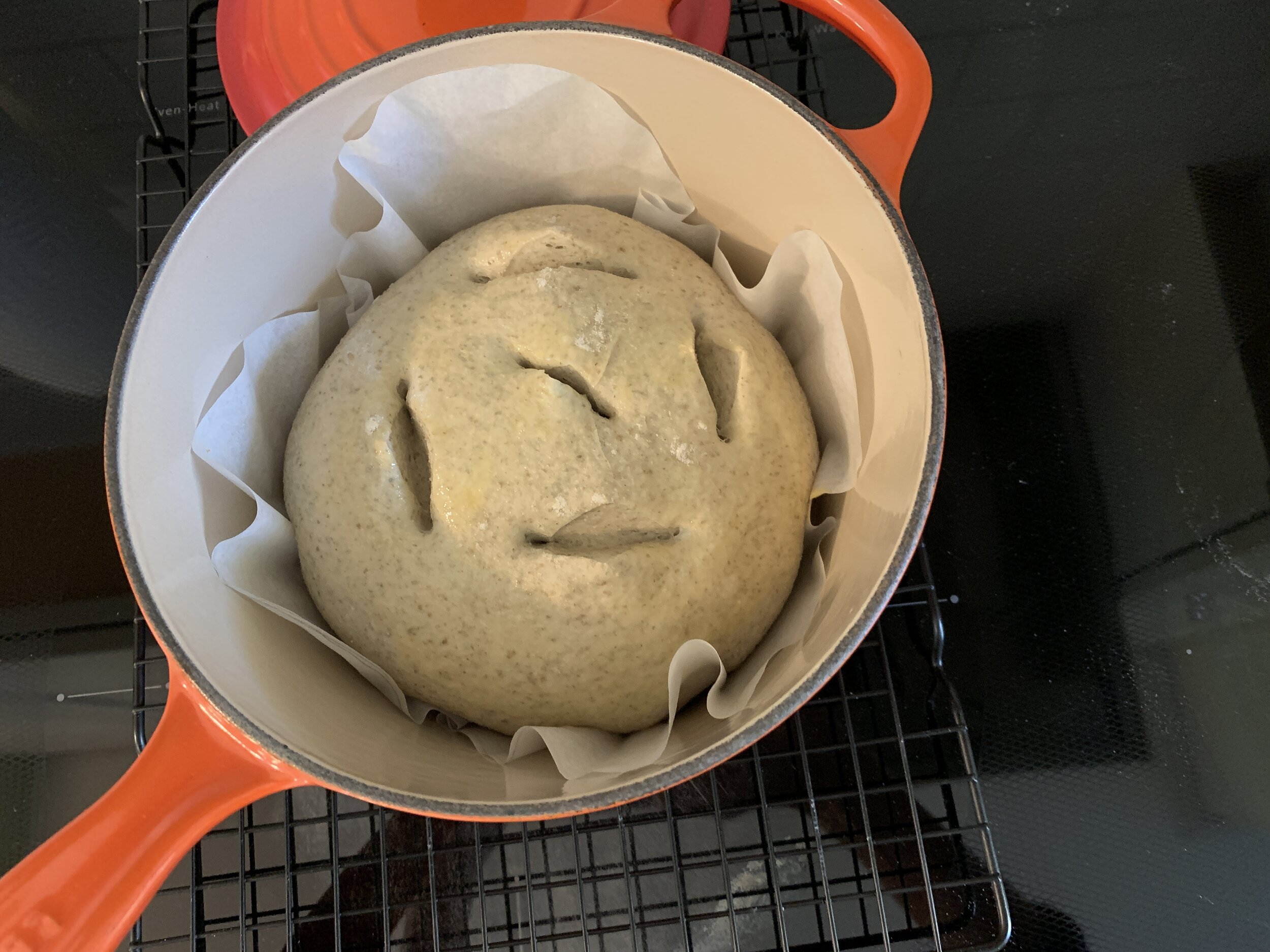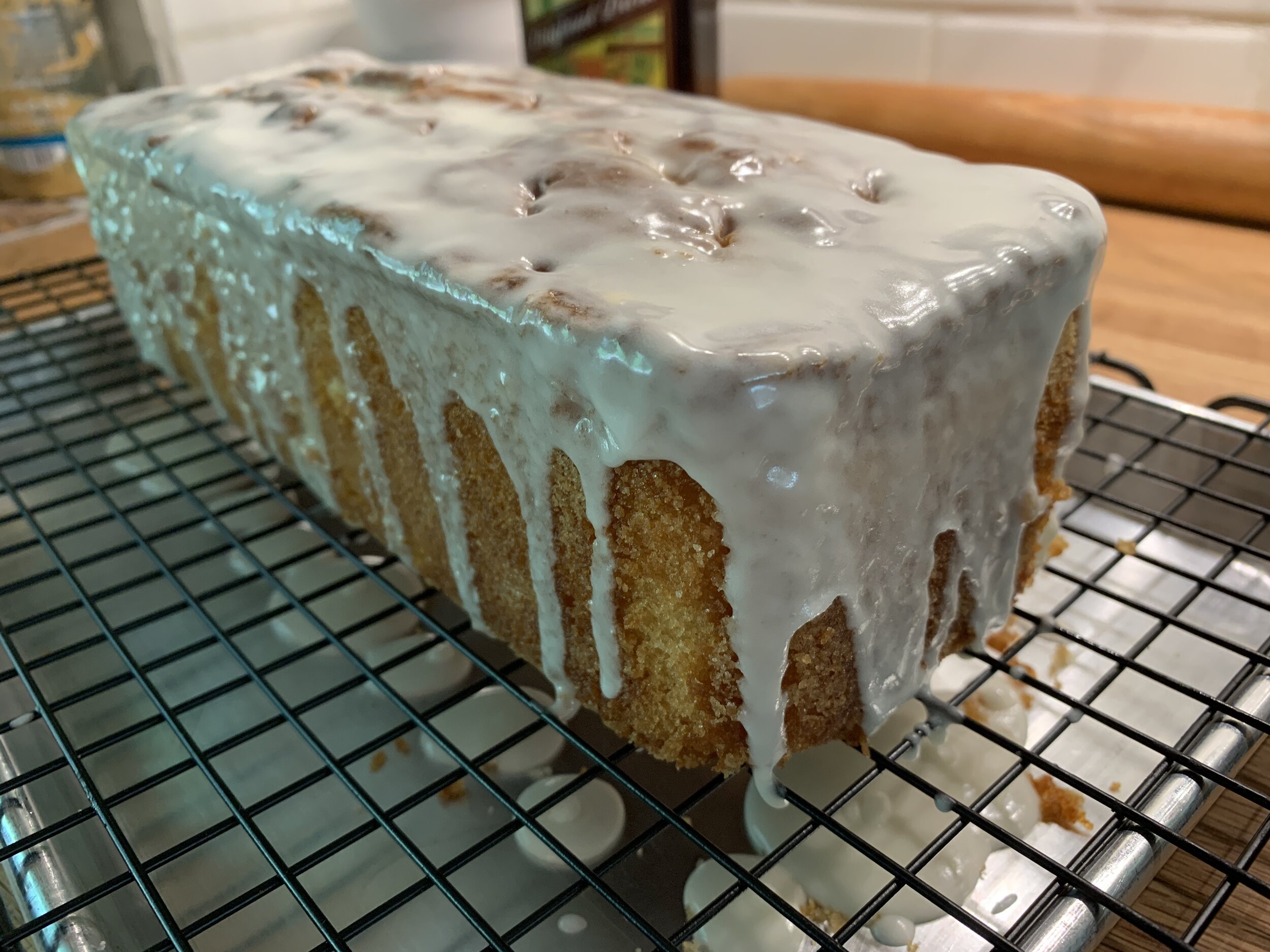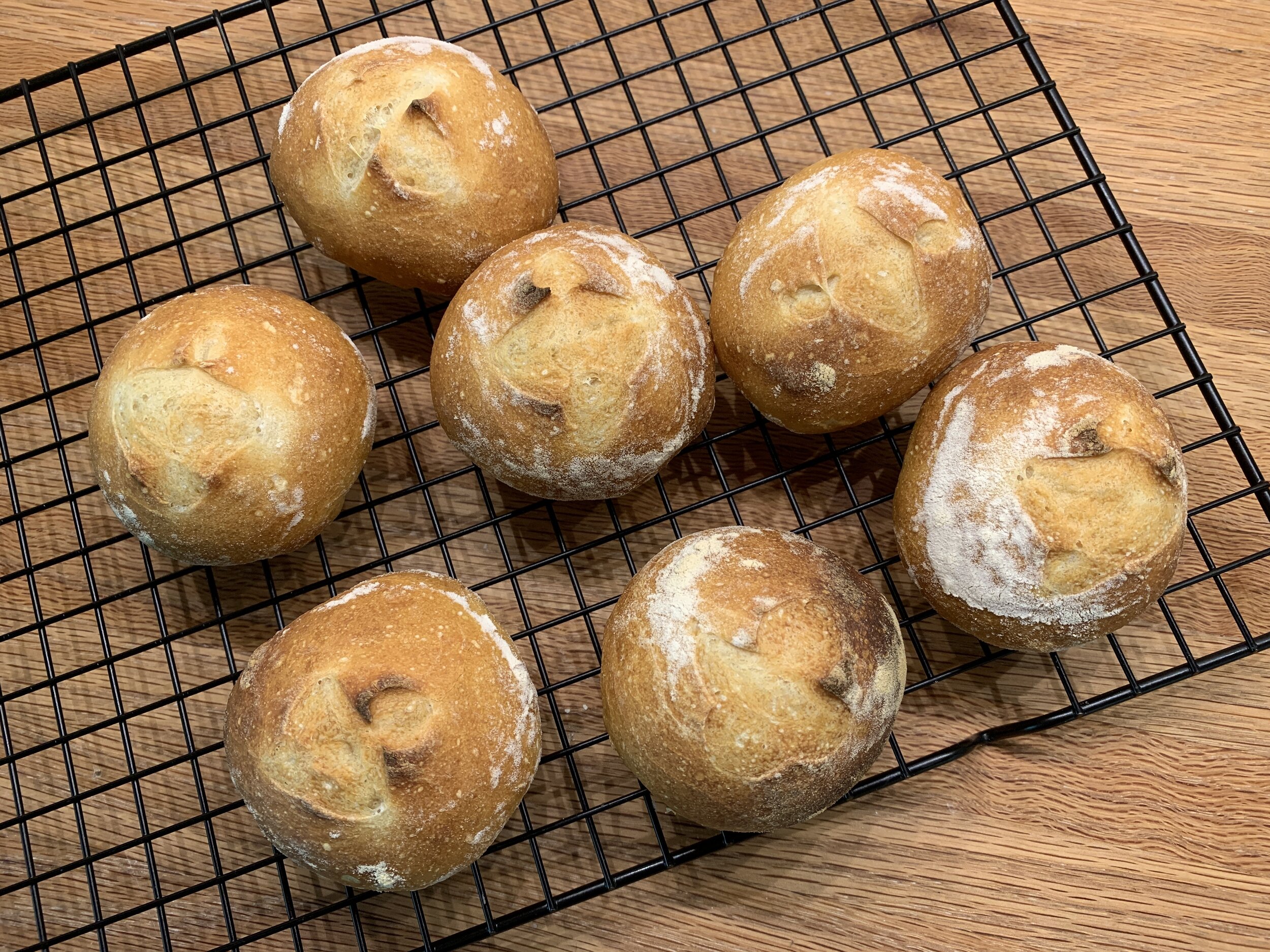Tarte aux fraises fraîches et à la crème
/It’s fresh strawberry season here in west Michigan! It doesn’t last long so we have to enjoy it while we can and what better way than nesting these succulent gems atop a whipped lime mascarpone cream in a flaky, buttery puff pastry base. Now that’s summer!
This is yet another great example of putting together a couple of favorite base recipes to create a delectable dessert. In this case I made a batch of rough puff pastry using 1/2 spelt and 1/2 ap flour. You can make the dough ahead and keep it frozen, well wrapped, for at least a couple of months. Thaw it in the fridge overnight the day before you want to use it.
It’s best to work with the dough cool so if your kitchen is pretty warm as can happen during these summery days, don’t be shy about popping it back into the fridge or freezer for a few minutes to keep it chill during any rolling session.
Using about 275 g of finished dough, roll it out to an approximately 11” inch square or as close to a circle as you can. Using a 9” tart form as a guide, trim the dough to a 10” circle; fold the edges under about an inch to form a lip, flute them if you’d like, brush it all with cream and sprinkle with vanilla sugar. Give it a good fork pricking, then into the freezer it goes for a least 30 minutes (while your oven is heating). Cold dough into a hot oven makes for good puffing. You can also roll and shape the dough ahead and hold it frozen for a day or two before baking (bake right out of the freezer - no thawing needed).
Remember when rolling out the dough, give it a rest for a few minutes a couple of times along the way before you finish to your desired size. It gives the dough a chance to relax (something we all need now and then) and will hold its shape better during baking. Give it a final rest before cutting - if you’re in a hurry, your dough may shrink back and loose it’s lovely shape.
For this tarte the crust is fully baked before adding the mascarpone cream and strawberries. I heat the oven to 425ºF to give my freezer stashed puff a nice hit of heat to start the puffing process. I place overturned wire grids across the sheet pan to give the puff an even rise and bake for 10 minutes before turning down the temp to 400ºF.
After another 5-8 minutes I remove the wire grids, decrease the temp to 375ºF and continue baking until nicely golden brown, another 5 minutes or so. Don’t be afraid to tweak your oven temps as you watch what’s happening in there. You be the judge.
All baked up
Once cooled, I take a sharp knife and develop a border to delineate where my filling will go, gently pushing the puff down in the center (not too much!).
Make the mascarpone filling and either pipe it or spread it over the crust, leaving the border free. For this size tarte a half recipe is just right. I used caramel as my sweetener, added the zest of a lime and a dollop of roasted strawberry purée to give it that special something.
The big challenge is how to arrange the fresh strawberries. While my heart tells me to be devil-may-care about it, my orderly personality makes me reluctant to throw caution to the wind. I made several of these for Father’s Day gatherings and created three different versions just because.
The first one, at least around the edges, reminds me of the humps along a cartoon dinosaur’s back . . . . . or a multi-pointed star.
One
The second is the most jumbled of the three - I sliced whole strawberries and while keeping the slices together tucked the berries rather higgle-dy/piggle-dy over the cream. Hmmmm . . . not sure about this one but there’s no going back now. Let’s remember it still tastes delicious!
Two
The third is simple yet classy (Steve’s favorite).
Three
I used some strawberry jam diluted with a bit of water and strained to give a light brushing over the berries for a bit of shine. It makes all the difference.
I had also assembled a small test tarte for us to sample, refrigerating it all day before tasting so as to assess how the puff would hold up. We finished it off the next morning after continued refrigeration over night, and I’m here to tell you that it handled it very well. Yay! I’m a stickler for serving things as freshly made as possible, but it’s always good to know when there’s some staying power to provide a bit of timing leeway.
At any rate, summer is officially here and I wish all of you a fantastic reopening full of good times ahead.
Smile!

